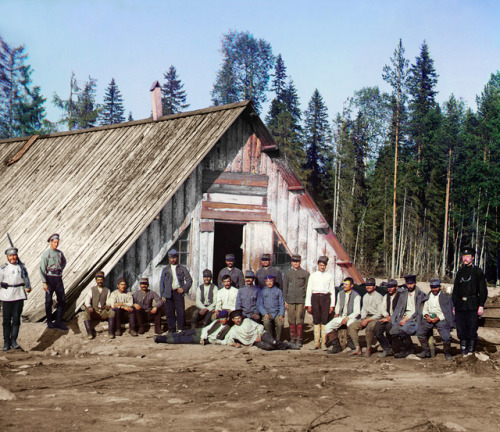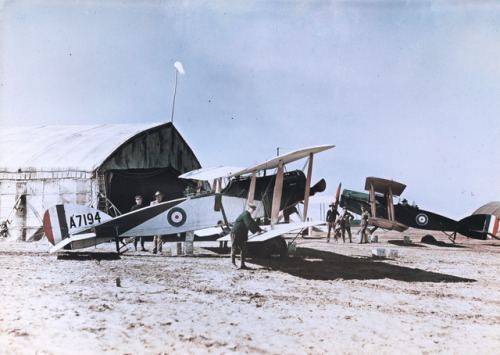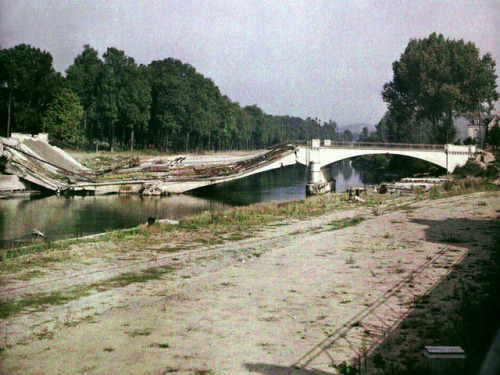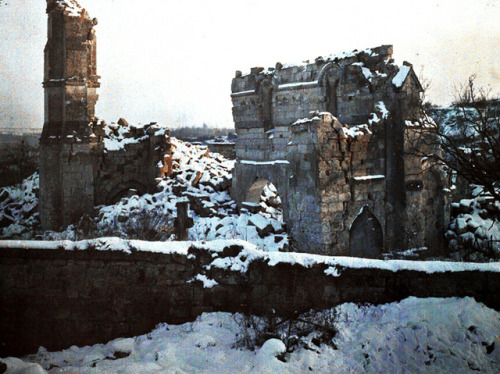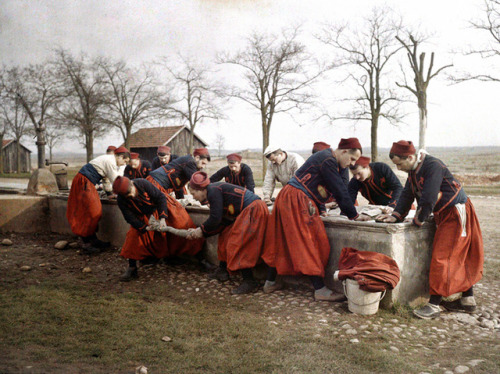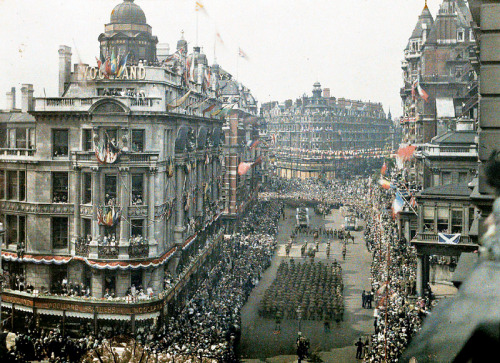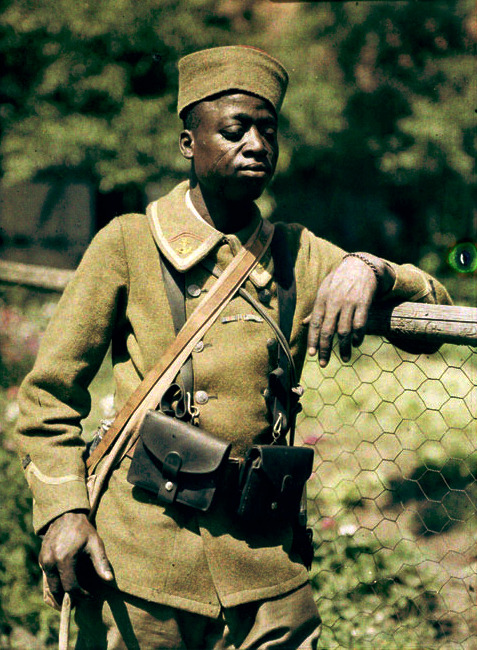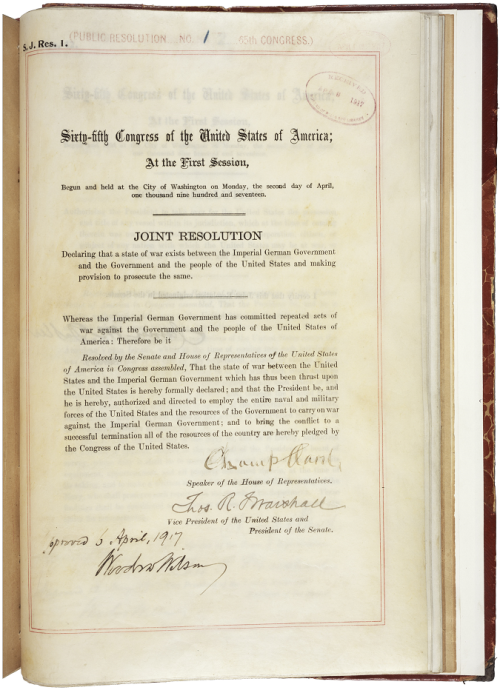#world war i
Photographer:Frank Hurley
Year:Unknown
Location:Palestine
Description:Transportation of weapons and war supplies to Australian troops down a road with the view of the Jordan Valley in the background.
Source: Mitchell Library, State Library of New South Wales
Post link
Photographer:Sergey Prokudin-Gorsky
Year:1915
Location:Kyappesel’ga, Russia
Description:Austro-Hungarian war captives pose with their Russian camp guards for a photograph in front of their wooden barrack at a prisoner of war camp in Kyappesel’ga, Russia. The prisoners are flanked on the left by two Russian soldiers, one of whom is shouldering a rifle, and on the right by a gendarme in a black uniform.
Source:Library of Congress/World Digital Library
Post link
Photographer:Frank Hurley
Year:1918
Location:Belah, Palestine
Description:The campsite of the Australian 4th Light Horse Brigade situated amongst the sand hills in Belah, Palestine on February 1918.
Source:Mitchell Library, State Library of New South Wales
Post link
Photographer:Frank Hurley
Year:1917
Location:Palestine
Description:Fighter planes parked outside the hangar of the 1st Squadron of the Australian Flying Corps in Palestine.
Source:Mitchell Library, State Library of New South Wales
Post link
Photographer:Unknown
Year:1919
Location: London, United Kingdom
Description: Large outdoor crowds and curious onlookers in flag-draped buildings watch as a procession of soldiers and tanks march and drive through the streets of Knightsbridge during the London Victory Parade on July 19th, 1919.
Source:Canadian Content/Mark Simner
Post link
Photographer: Unknown
Year:1919
Location:London, United Kingdom
Description: A crowd gathers around the streets and flag-draped buildings near Big Ben for the London Victory Parade on July 19th, 1919.
Source: Canadian Content/Mark Simner
Post link
“Resolved … That the state of war between the United States and the Imperial German Government which has thus been thrust upon the United States is hereby formally declared … “ 4/6/1917
Series: Enrolled Acts and Resolutions of Congress, 1789 - 2013
Record Group 11: General Records of the United States Government, 1778 - 2006
Transcription:
[stamp[ (except for handwritten “1”):]] (PUBLIC RESOLUTION NO. 1 65TH CONGRESS.)
S. J. Res. 1.
[ [oval] stamp [with date between upper & lower text]]
RECEIVED
APR 6 [?] 1917
BUREAU OF ROLLS AND LIBRARY [/stamp]
Sixty-fifth Congress of the United States of America;
At the First Session,
Begun and held at the City of Washington on Monday, the second day of April, one thousand nine hundred and seventeen.
[doubled (centered) separating horizontal line in Image]
JOINT RESOLUTION
Declaring that a state of war exists between the Imperial German Government and the Government and the people of the United States and making provision to prosecute the same.
[another (doubled & centered) horizontal separating line seen in Image]
Whereas the Imperial German Government has committed repeated acts of war against the Government and the people of the United States of America: Therefore be it
[words up to comma italicized in Image:] Resolved by the Senate and House of Representatives of the United States of America in Congress assembled, That the state of war between the United States and the Imperial German Government which has thus been thrust upon the United States is hereby formally declared; and that the President be, and he is hereby, authorized and directed to employ the entire naval and military forces of the United States and the resources of the Government to carry on war against the Imperial German Government; and to bring the conflict to a successful termination all of the resources of the country are hereby pledged by the Congress of the United States.
[signed] Champ Clark
[words italicized:]Speaker of the House of Representatives.
[signed] Thos. R. Marshall
[words italicized:]Vice President of the United States and
President of the Senate.
[handwritten] [A]pproved 6 April, 1917.
[signed] Woodrow Wilson
Post link
April 6, 1917 - The United States officially enters World War I
“Two days after the U.S. Senate voted 82 to 6 to declare war against Germany, the U.S. House of Representatives endorses the declaration by a vote of 373 to 50, and America formally enters World War I.
When World War I erupted in 1914, President Woodrow Wilson pledged neutrality for the United States, a position that the vast majority of Americans favored. Britain, however, was one of America’s closest trading partners, and tension soon arose between the United States and Germany over the latter’s attempted quarantine of the British Isles. Several U.S. ships traveling to Britain were damaged or sunk by German mines, and in February 1915 Germany announced unrestricted warfare against all ships, neutral or otherwise, that entered the war zone around Britain. One month later, Germany announced that a German cruiser had sunk the William P. Frye, a private American vessel. President Wilson was outraged, but the German government apologized and called the attack an unfortunate mistake.
On May 7, the British-owned Lusitania ocean liner was torpedoed without warning just off the coast of Ireland. Of the 1,959 passengers, 1,198 were killed, including 128 Americans. The German government maintained that the Lusitania was carrying munitions, but the U.S. demanded reparations and an end to German attacks on unarmed passenger and merchant ships. In August, Germany pledged to see to the safety of passengers before sinking unarmed vessels, but in November sunk an Italian liner without warning, killing 272 people, including 27 Americans. With these attacks, public opinion in the United States began to turn irrevocably against Germany.
In 1917, Germany, determined to win its war of attrition against the Allies, announced the resumption of unrestricted warfare in war-zone waters. Three days later, the United States broke diplomatic relations with Germany, and just hours after that the American liner Housatonic was sunk by a German U-boat. On February 22, Congress passed a $250 million arms appropriations bill intended to make the United States ready for war. In late March, Germany sunk four more U.S. merchant ships, and on April 2 President Wilson appeared before Congress and called for a declaration of war against Germany. Four days later, his request was granted.
On June 26, the first 14,000 U.S. infantry troops landed in France to begin training for combat. After four years of bloody stalemate along the western front, the entrance of America’s well-supplied forces into the conflict marked a major turning point in the war and helped the Allies to victory. When the war finally ended, on November 11, 1918, more than two million American soldiers had served on the battlefields of Western Europe, and some 50,000 of them had lost their lives.“
This Month in History:
April 3, 1860 - The Pony Express begins
April 9, 1959 - NASA introduces America’s first astronauts
April 12, 1963 - Martin Luther King, Jr. writes "Letter from a Birmingham Jail”
April 20, 1902 - Marie and Pierre Curie isolate radium
April 24, 1800 - Library of Congress established
April 30, 1803 - United States and France conclude the Louisiana Purchase
ThisSelective Service Poster from World War I can be found in the online collection of the McLeod County Historical Society & Museum.
Post link
Happy birthday, Louis Raemaekers! The Dutch political cartoonist and painter was born on April 6, 1869 in Roermond, Netherlands. He was best known for his graphic and powerful World War I cartoons which were reprinted in newspapers all over the world. We have several books of his works: Raemaekers’ cartoon history of the war (1919), Raemaekers’ Cartoons (1917), Kultur in cartoons (1917), and The great war, a neutral’s indictment (1916). Ask a librarian to see anything in our special collections.
Post link
A member of the Canadian Cyclist Corp smiles for the camera, September 1917.
Original image source: Canadian Library and Archives
Post link
October 18 1921, Washington–Despite multiple attempts, the Treaty of Versailles had failed to reach the required two-thirds majority for ratification in the US Senate. The Harding Administration negotiated and signed new treaties with Germany, Austria, and Hungary, dropping American participation in the League of Nations or most other international commitments from Treaty of Versailles. Nonetheless, there was still determined opposition to the new treaties, and it was no means clear that the new treaties would not meet the same fate. Wilson, now living in DC, attempted to organize Democrats against the treaty, while a few die-hard irreconcilables opposed the treaty as they feared any recognition of any aspect of the Treaty of Versailles would lead to the United States joining the League of Nations in the future. Ultimately, however, the treaty with Germany was ratified by a wide margin, 66-20, with more than half of the Senate Democrats voting in favor. The other treaties were ratified by a similar margin. Wilson, fuming at this final defeat, called the treaty’s supporters “the most partisan, prejudiced, ignorant, and unpatriotic group that ever misled the Senate of the United States.”

A massive crowd rallies outside the former Royal Palace and the Kaiser Wilhelm Monument, expressing their support for the Republic. Both structures were demolished by the East German government after World War II, though a reconstruction of the palace was completed in 2020.
August 31 1921, Biberach–Matthias Erzberger, leading advocate of peace since July 1917 and signer of the Armistice, quickly became a bête noire to the German right, who viewed him as a traitor. By 1921, he had retreated to the backbenches of the Reichstag. Organisation Consul, a violently anti-Semitic and ultranationalist terror group formed after the dissolution of the Ehrhardtbrigade (the main force behind last year’s Kapp Putsch), assassinated Erzberger on August 26. The two assassins escaped Germany and would not stand trial until after World War II.
His funeral, on August 31, became a political rally for his Zentrumparty; the keynote speaker was his long-time ally, Chancellor Joseph Wirth. In Berlin, over 100,000 workers, mostly members of the SDP and other left-wing parties, demonstrated in support of the fragile German Republic.
August 25 1921, Berlin–Republican objections to the League of Nations had prevented American ratification of the Treaty of Versailles, and Harding’s election to the presidency in 1920 sealed its fate. This, however, left the United States still officially at war with Germany. On July 2, 1921 the United States officially declared that the state of war with Germany, Austria, and Hungary was over, but a formal peace treaty still needed to be signed. This came on August 25, with a brief treaty signed in Berlin. This effectively was the United States ratifying the Treaty of Versailles with extreme reservations:
- The United States would not join the League of Nations or the International Labour Organization.
- The United States would not concern itself with Germany’s borders or other strictly European matters agreed to in the treaty.
- The United States did not recognize the provisions of the Treaty of Versailles considering German concerns outside Europe (apart from the surrendering of her colonies); in particular, this included the handover of Shantung to the Japanese.
- The United States would not attempt to conduct war crimes trials of the Kaiser or other German war criminals.
- The United States would not join the International Labour Organization.
- The United States would not be compelled to participate in any commission called for by the Treaty of Versailles.
In the same week, similar treaties were signed with Austria and Hungary; the United States never declared war on Bulgaria or the Ottoman Empire.
July 11 1921, London–The Sinn Féin sweep of the Southern Irish elections, winning every seat unopposed except the ones associated with Trinity College, put a deadline on British efforts in Ireland. A Southern Irish government was, by the terms of the Government of Ireland Act 1920, to be established no later than July 12. Sinn Féin, following its usual abstentionist policies, would not take their seats in any Southern Irish parliament, leaving the British forced to either impose military rule on all of Southern Ireland, or reach a negotiated settlement with Sinn Féin. The former was never seriously considered, so it became a question of finding an agreeable basis for negotiations with the Irish.
At the opening of the Northern Irish parliament on June 22, King George gave a conciliatory speech. In the meantime, Jan Smuts, who had recently arrived from South Africa for a conference, began his own negotiations through Tom Casement (brother of the late Roger), and both agreed that a peaceful solution could be found which did not involve British recognition of an Irish Republic. Casement and Smuts arranged the release of additional negotiators, and a truce was agreed to on July 9, entering into effect on July 11. The terms were slightly unclear, with the Irish and British ultimately publishing different versions, but both sides would stop attacks and raids, and the British would cease military maneuvers and searches.
The truce came as something of a surprise to many in the IRA, and it would attract some criticism from those who felt they could beat the British without making concessions regarding Ireland’s political future. British criticism of the truce was more muted, as it was clear the only alternative was a military occupation of the whole island that nobody was in favor of after nearly seven years of war.
Sources include: Michael Hopkinson, The Irish War of Independence

Greenwood destroyed.
June 1 1921, Tulsa–White mob violence against black communities had abated nationwide since the Red Summer of 1919, but the threat was still ever-present and materialized once again at the end of May 1921 in Tulsa.
On Memorial Day, May 30, a 19 year-old black shoeshiner, Dick Rowland, entered the elevator operated by 17-year-old white Sarah Page, on his way to use the segregated bathroom on the top floor of the building. A clerk in a nearby store heard a scream, saw Rowland running from the building, and called the police. Page denied an assault had taken place, did not want to press charges, and said that Rowland had done nothing beyond grabbing her arm. It has been speculated that Rowland tripped as he entered the elevator, and grabbed onto a shocked Page as he fell, before understandably fleeing the scene, knowing the likely fate of a black man found alone with a screaming white woman.
Roland was arrested the next morning, and was taken to the city jail, and then to a more secure location at the top of the Tulsa County Courthouse to protect him from a possible lynching. The afternoon edition of the Tulsa Tribune reported the story under the headline “Nab Negro for Attacking Girl In an Elevator,” and a now-missing editorial discussed (and perhaps called for) Rowland’s potential lynching. By sunset, a white crowd of several hundred had gathered outside the courthouse.
Two hours later, a few dozen black World War I veterans arrived from the Greenwood neighborhood with guns to help defend the courthouse from a lynch mob. Some of the mob went to secure arms of their own; the National Guard did prevented them from raiding the armory, but many others retrieved their own guns from their houses. After 10 PM, another group arrived from Greenwood to offer additional defense for the courthouse. Gunfire soon broke out; the black men retreated towards Greenwood, while the white mob pursued and looted stores for more guns and ammunition. The National Guard units in the area defended the courthouse, the armory, and a few other buildings, along with detaining a number of black Tulsa residents, but did not take any action against the rioting white population.
Gunfire continued through the night, along with the occasional automobile raid into Greenwood. At around 1 AM, fires were set in black businesses at the southern end of Greenwood; fire fighters were kept away by force. After sunrise, large numbers of armed white men moved into Greenwood, supported from the air by at least one plane. A handful of the rioters were killed by black defenders, but the neighborhood was quickly overwhelmed; many were able to flee to the north, but several thousand were detained.
Martial law was declared shortly before noon, and the rioting stopped within minutes, though the fires continued. Greenwood was destroyed, and up to 300 Tulsa residents, the vast majority black, were killed. None of the perpetrators were convicted of any crimes; the police chief was dismissed later in the summer and imprisoned on unrelated charges. Dick Rowland was released in September, the charges against him dropped.


